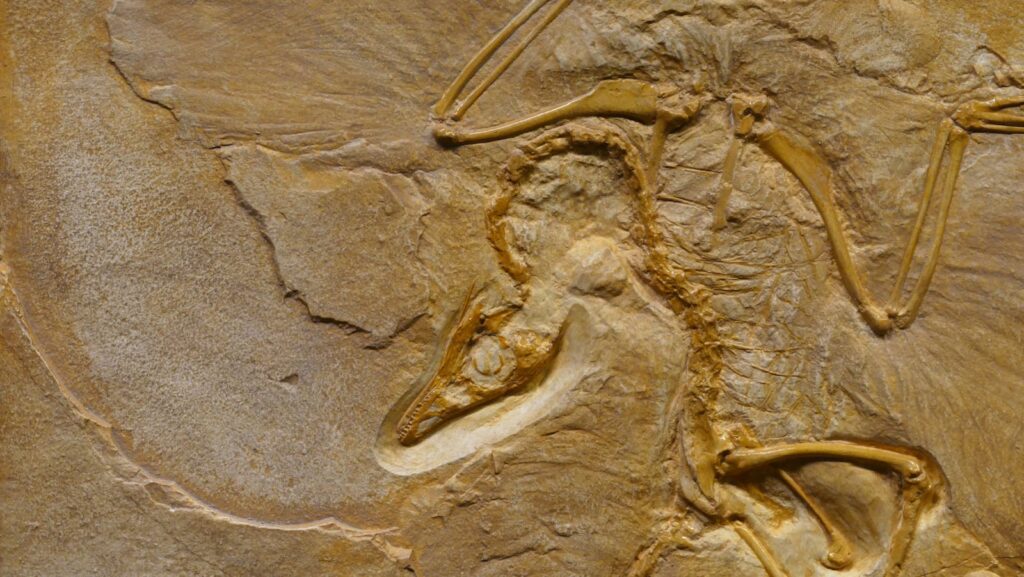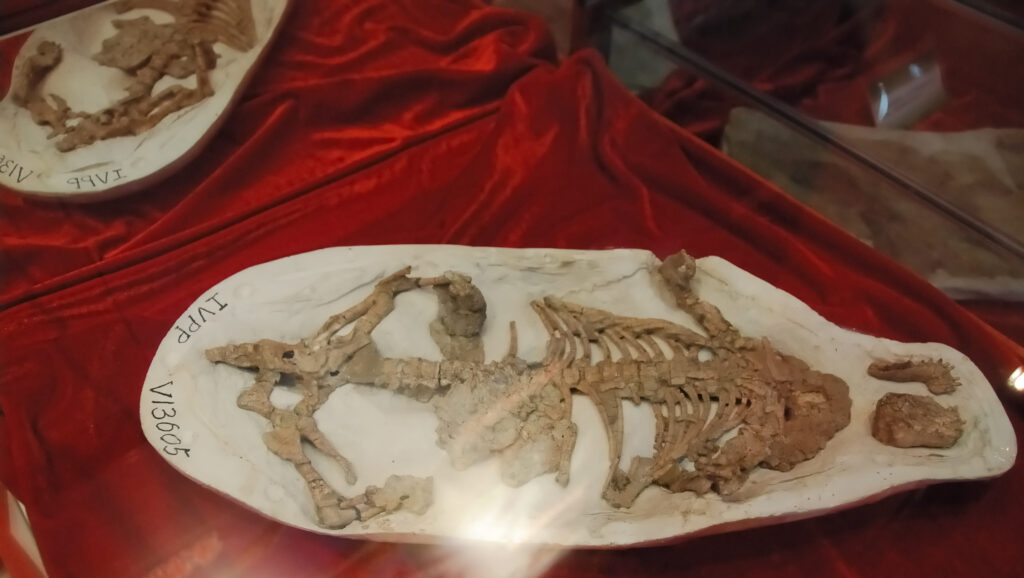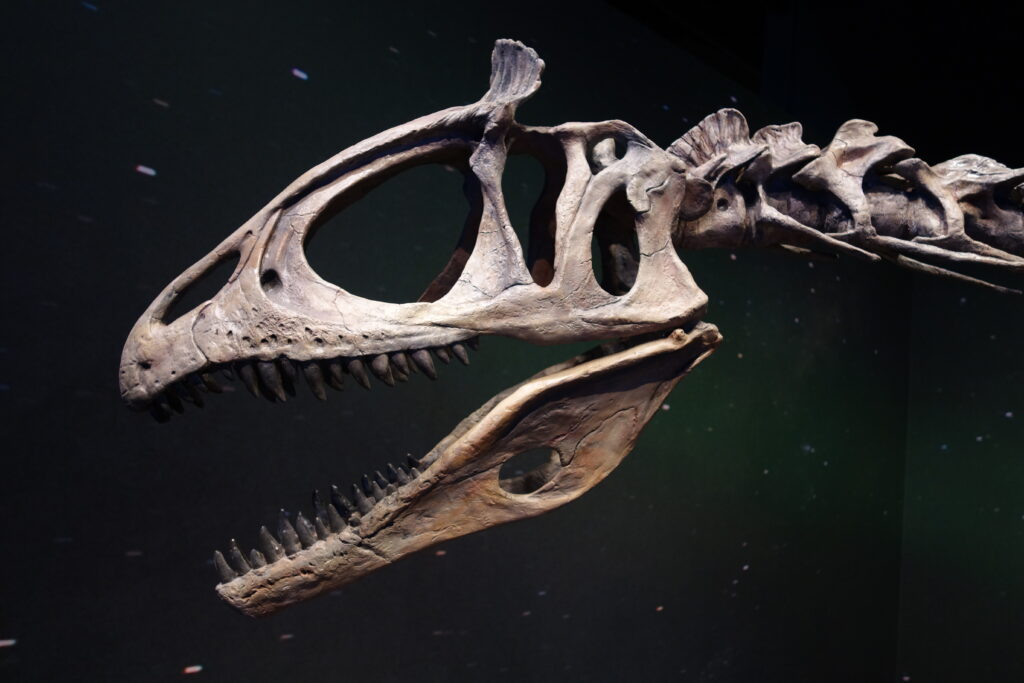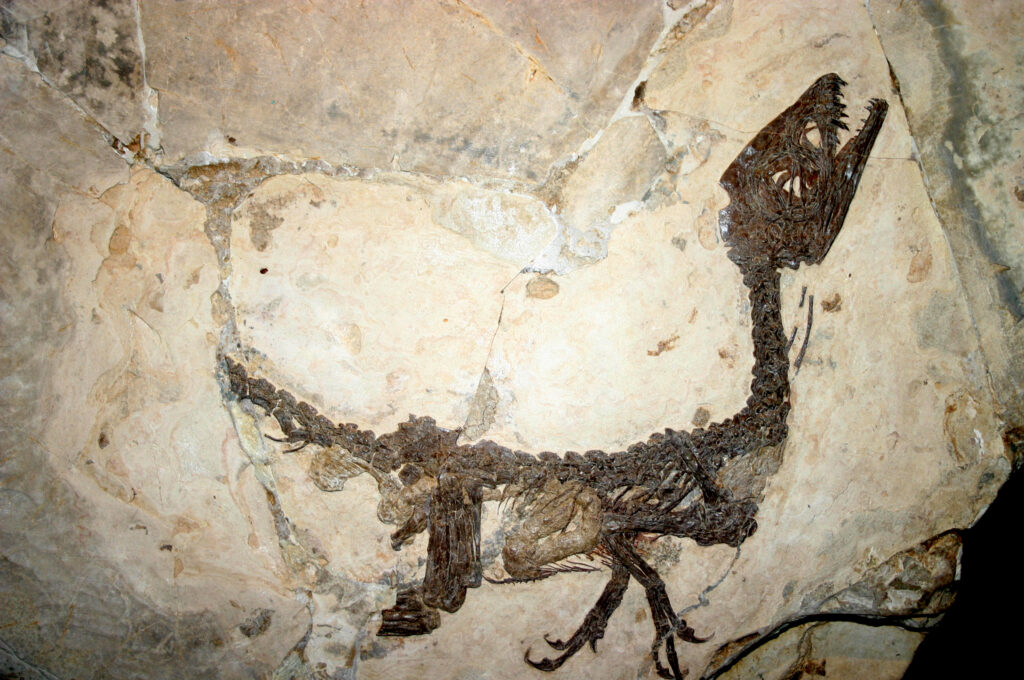The discovery of prehistoric bones has repeatedly challenged religious doctrines and sparked intense debate throughout human history. From fossilized dinosaur remains to ancient hominid skeletons, these tangible pieces of Earth’s distant past have forced religious institutions and believers to reconcile their faith with scientific evidence. This article explores the fascinating historical intersections where paleontological discoveries have disrupted theological certainties, transformed religious thinking, and ultimately led to new understandings of science and faith.
The First Fossil Discoveries That Challenged Biblical Timelines

In the late 17th and early 18th centuries, European naturalists began uncovering strange bones that defied easy explanation within the prevailing religious frameworks. Robert Plot’s 1677 discovery of what we now know was a dinosaur femur (which he mistakenly attributed to a giant human) represented one of the earliest documented fossils that would eventually challenge biblical chronology. More systematic fossil hunting in the late 18th century revealed creatures that appeared to have vanished from Earth, contradicting the belief that God’s creation remained unchanged since Genesis. French naturalist Georges Cuvier established extinction as a scientific fact through his studies of mammoth and mastodon remains, inadvertently questioning the perfection and permanence of divine creation. These early discoveries planted the seeds of doubt about the literal interpretation of biblical creation timelines, suggesting Earth might be far older than the roughly 6,000 years calculated from biblical genealogies.
Mary Anning and the Marine Reptiles That Disturbed Victorian Faith

Mary Anning, a working-class woman from Lyme Regis, England, made fossil discoveries in the early 19th century that profoundly disturbed the religious sensibilities of her time. Her 1811 discovery of a complete ichthyosaur skeleton, followed by plesiosaur and pterosaur specimens, revealed creatures unlike anything living today. These marine reptiles presented Victorian society with concrete evidence of a world before humans—a prehistoric realm not mentioned in scripture. The Church of England, the dominant religious authority in Britain, struggled to incorporate these strange beasts into the biblical narrative. Some clergy suggested that fossils were placed in rocks by God to test human faith, while others proposed they were casualties of Noah’s flood. Anning herself maintained her religious faith while continuing her scientific work, embodying the personal struggle many experienced when confronting evidence that contradicted traditional interpretations of scripture.
Dinosaurs and the Challenge to Creation Narratives

The naming of dinosaurs by Richard Owen in 1842 marked a watershed moment in the confrontation between paleontology and religion. These “terrible lizards” captured public imagination while presenting an undeniable challenge to literal interpretations of Genesis. The sheer size, diversity, and antiquity of dinosaur fossils suggested Earth had experienced lengthy periods unmentioned in scripture, inhabited by creatures unknown to biblical authors. Religious authorities responded with varied interpretations: some suggested dinosaurs coexisted with humans but weren’t specifically mentioned in the Bible, while others developed the “gap theory,” proposing long ages between initial creation and the six days described in Genesis. American religious communities were particularly affected when massive dinosaur discoveries in the Western territories during the late 19th century received widespread publicity. The immense sauropods unearthed by paleontologists like Edward Drinker Cope and Othniel Charles Marsh forced a reckoning with evidence that Earth’s history extended far beyond human memory or written records.
The Concept of Deep Time and Its Religious Implications

James Hutton’s late 18th-century geological work and Charles Lyell’s subsequent development of uniformitarianism introduced the revolutionary concept of “deep time”—the idea that Earth’s history spans millions or billions of years rather than thousands. This geological timescale, increasingly supported by fossil evidence, directly challenged the short chronology derived from biblical texts. Religious communities faced a fundamental dilemma: either reject the emerging scientific consensus or reinterpret scripture to accommodate vastly longer timeframes. Many theologians began to view creation days as metaphorical periods rather than literal 24-hour intervals. The Catholic Church gradually adopted a more accommodating position, suggesting that Genesis conveyed spiritual truths rather than scientific facts. Protestant denominations split over this issue, with some embracing scientific findings while others hardened their commitment to biblical literalism. This division over deep time continues to characterize religious responses to paleontology today, with some denominations accepting an ancient Earth while others maintain young-Earth creationism.
Darwin’s Theory and the Fossil Evidence That Transformed Christianity

Charles Darwin’s 1859 publication of “On the Origin of Species” leveraged fossil evidence to propose natural selection as the mechanism driving biological evolution. The paleontological record, despite its incompleteness, provided Darwin with crucial evidence for the transformation of species over time. Religious institutions worldwide were forced to confront not just an old Earth, but a process of creation fundamentally different from the special divine interventions described in scripture. Darwin’s contemporary, Thomas Henry Huxley, used fossils like Archaeopteryx—with its mix of reptilian and avian features—to publicly debate religious authorities about evolution. The Anglican Church eventually accommodated evolutionary thinking through theologians like Frederick Temple, who became Archbishop of Canterbury. Catholic responses evolved from initial rejection to Pope Pius XII’s 1950 encyclical Humani Generis, which allowed Catholics to explore evolutionary science. The discovery of Tiktaalik, a 375-million-year-old transitional fossil between fish and land animals found in 2004, continues to challenge religious communities that reject evolutionary accounts of human origins.
Human Fossils and the Theological Crisis of Human Origins

The discovery of human-like fossil remains in the mid-19th century provoked perhaps the most significant religious crisis triggered by paleontology. When the first Neanderthal skeleton was discovered in Germany’s Neander Valley in 1856, its implications were immediately troubling for religious authorities. Here was a creature human-like yet different from modern humans, suggesting a lineage predating Adam and Eve. The subsequent discovery of Homo erectus fossils in Java in the 1890s further complicated the biblical narrative of human origins. Religious communities faced difficult questions about the spiritual status of these beings—did they have souls? Were they part of God’s plan? Did they fall outside salvation history? These questions became even more pressing with Raymond Dart’s 1924 discovery of Australopithecus africanus in South Africa, pushing human ancestry deeper into time. Some religious thinkers developed theories of “pre-Adamite” races, while others maintained that only anatomically modern humans possessed true spiritual identity.
The Scopes Trial and America’s Fossil Controversy

The 1925 Scopes “Monkey Trial” in Dayton, Tennessee, represented the most famous American confrontation between fossil evidence and religious doctrine. John Scopes, a high school teacher, was prosecuted for teaching evolutionary theory in violation of Tennessee’s Butler Act, which prohibited teaching any theory contradicting the biblical account of human creation. The trial featured dramatic testimony about fossil evidence from renowned scientists, contrasted with William Jennings Bryan’s defense of biblical literalism. Though Scopes was technically convicted, the trial exposed millions of Americans to scientific evidence for evolution through extensive media coverage. The fossil record became central to public debate about science education and religious freedom in American society. This legal battle established a pattern of conflict that continues in American courts today, with subsequent cases addressing the teaching of fossils and evolution in public school science curricula. The Scopes Trial marked a turning point where paleontological evidence moved from scientific journals into courtrooms and newspapers, forcing religious communities to publicly defend their interpretations of human origins.
The Rise of Scientific Creationism and Fossil Reinterpretation

The mid-20th century saw religious pushback against paleontological challenges through the emergence of “scientific creationism,” a movement attempting to interpret fossil evidence within a biblical framework. Leading figures like Henry Morris and John Whitcomb published “The Genesis Flood” in 1961, arguing that most fossils were deposited during Noah’s flood rather than over millions of years. This approach did not reject fossils themselves but radically reinterpreted their meaning and timeframe. Creation scientists suggested dinosaurs coexisted with early humans, pointing to purported human and dinosaur footprints found together at the Paluxy River in Texas (later shown to be misidentifications). The Creation Research Society, founded in 1963, developed alternative explanations for fossil sequences, suggesting they represented ecological zonation during the flood rather than evolutionary chronology. This movement represents a significant religious adaptation to fossil discoveries—acknowledging the evidence while rejecting conventional scientific interpretations—and continues to influence religious communities today, particularly within evangelical Christianity in the United States.
Islamic Responses to Fossil Discoveries

Islamic scholars have developed their distinctive responses to the challenges posed by paleontological discoveries. Early Muslim scientists like Al-Biruni (973-1048 CE) made observations about fossils that suggested long geological processes, demonstrating Islam’s historical openness to natural investigation. Modern Islamic responses to fossils range from rejection of evolution to sophisticated theological accommodations. Harun Yahya (pen name of Adnan Oktar), a prominent Turkish author, has published extensively arguing against evolutionary interpretations of fossils while accepting their authenticity. Other Muslim scholars, such as Nidhal Guessoum, argue that the Qur’an’s creation account is compatible with evolutionary processes and an ancient Earth revealed through fossils. The Islamic world has generally been more concerned with human evolution than dinosaurs or other prehistoric life, focusing on maintaining the special creation of humans described in the Qur’an. Organizations like the Islamic Research Foundation International have worked to develop perspectives that honor both fossil evidence and Islamic teaching, suggesting that Allah’s creative process worked through natural laws over extensive periods.
Hindu and Buddhist Perspectives on Ancient Life

Eastern religious traditions like Hinduism and Buddhism have generally experienced less conflict with paleontological discoveries due to their cyclical views of time. Hindu cosmology already encompassed vast periods, with each kalpa representing billions of years, making the concept of ancient extinct species less theologically problematic. When dinosaur fossils were discovered in India during the colonial period, Hindu scholars could integrate them into existing beliefs about world cycles and previous creations. The Buddhist concept of impermanence (anicca) aligns naturally with the extinction events evident in the fossil record, as Buddhism already taught that all living beings are subject to arising and passing away. Neither tradition maintained a literal seven-day creation narrative that would be directly challenged by fossil evidence. Contemporary Hindu scientists like Jayant Narlikar have noted how ancient Hindu texts potentially anticipated modern scientific discoveries about Earth’s ancient past. The Jain tradition, with its non-theistic approach and emphasis on the eternal nature of the universe, has perhaps the least theological tension with paleontological timescales among major world religions.
Intelligent Design and the Modern Fossil Debate

The late 20th century saw the emergence of the Intelligent Design movement as a more sophisticated religious response to paleontological evidence. Rather than denying the age of fossils or their evolutionary relationships, proponents like Michael Behe and William Dembski argue that certain biological structures evident in the fossil record are too complex to have evolved through natural selection alone. The Discovery Institute, founded in 1990, has promoted this perspective through publications analyzing fossils like the Cambrian explosion specimens from Canada’s Burgess Shale, which show many complex body plans appearing in a relatively short geological period. Unlike earlier creationist approaches, Intelligent Design generally accepts conventional dating of fossils while suggesting divine intervention at critical evolutionary junctures. Critics within both scientific and religious communities have challenged this approach—scientists argue it represents religion disguised as science, while some theologians worry it creates a “God of the gaps” who only appears when scientific explanations are incomplete. The fossil discoveries of transitional forms like Tiktaalik and feathered dinosaurs continue to challenge Intelligent Design claims about unbridgeable gaps in the evolutionary record.
Modern Religious Accommodations and Continuing Tensions

Contemporary religious institutions have developed various accommodations to incorporate fossil evidence while maintaining theological integrity. Pope Francis’s 2014 statement that “Evolution in nature is not inconsistent with the notion of creation” reflects the Catholic Church’s current position, which accepts the scientific consensus on Earth’s age and evolutionary processes. The BioLogos Foundation, established by geneticist Francis Collins, represents evangelical Christians who fully accept paleontological evidence while maintaining faith in divine purpose behind evolutionary processes. Meanwhile, the Creation Museum in Kentucky, opened in 2007, exemplifies continuing religious resistance to conventional paleontology, displaying dinosaurs alongside humans in a young-Earth setting. These diverse approaches demonstrate how religious communities continue to negotiate the challenges posed by fossil evidence. Public opinion surveys reveal significant variations in acceptance of paleontological findings along religious lines, with evangelical Protestants and Muslims generally more skeptical of conventional fossil interpretations than Catholics, mainline Protestants, or the religiously unaffiliated. These tensions play out in ongoing debates about science education standards in many countries.
Paleontology’s Continuing Impact on Religious Thought

The ongoing discovery of new fossil evidence continues to influence religious thinking in the 21st century. Recent findings like Homo naledi in South Africa (2015), with its unique combination of primitive and modern features, add complexity to religious narratives about human uniqueness and divine image. Religious communities increasingly recognize that paleontology not only challenges certain theological positions but can enrich religious understanding by revealing the complexity and wonder of creation. Theologians like John Haught have developed “evolutionary theology” that incorporates paleontological insights into religious frameworks, suggesting that divine activity works through natural processes across deep time. Religious educational institutions increasingly teach about fossils in ways that honor both scientific evidence and faith commitments, developing more nuanced approaches than the simple opposition that characterized earlier encounters. Some indigenous religious traditions have found their creation stories validated by paleontological discoveries that confirm ancient local knowledge about extinct creatures. As paleontology continues to uncover Earth’s ancient history, religious traditions demonstrate remarkable adaptability in responding to new evidence while maintaining their core spiritual insights.
Conclusion

The confrontation between prehistoric bones and religious doctrines represents one of history’s most profound intellectual challenges. From early fossil discoveries that hinted at an ancient Earth to the detailed evolutionary record now available, paleontological evidence has repeatedly forced religious communities to reconsider their understanding of creation. While this encounter has sometimes produced conflict and resistance, it has also stimulated theological innovation and more sophisticated interpretations of religious texts. The continuing dialogue between fossil evidence and faith demonstrates religion’s capacity for adaptation and reinterpretation when faced with compelling scientific discoveries. Rather than leading to religion’s defeat, as some predicted, paleontology has contributed to its evolution, encouraging more nuanced approaches to scripture, more humble theological claims about natural history, and more wonder at the complexity of creation, however understood.




